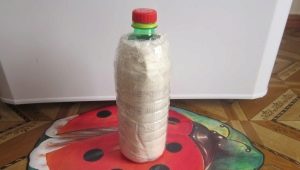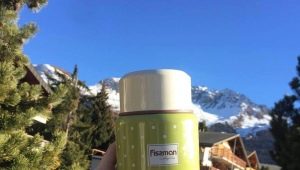How is a thermos?
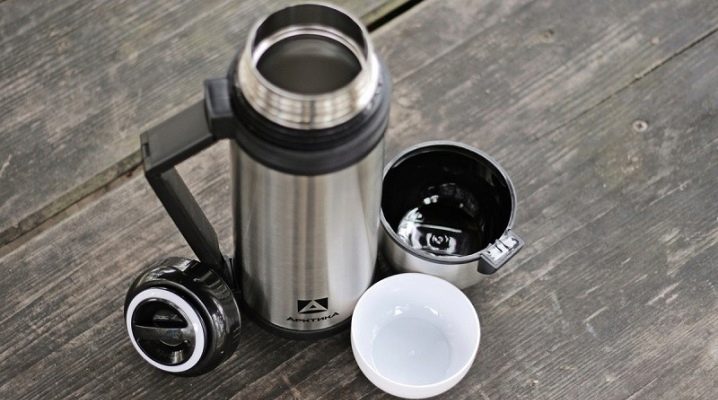
A thermos is a household accessory with heat-insulating properties, designed to temporarily keep (up to a day) food hot or cold. This is an indispensable thing in hiking, fishing, on vacation, on the road.
With a thermos, you can always drink a cup of hot tea or coffee, refresh yourself with a cold drink, and even have a hearty lunch.
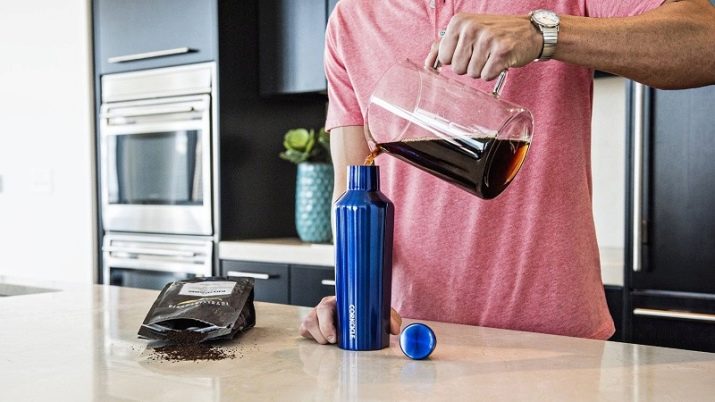
Kinds
There are many types of thermoses.
- For liquids. They have a narrow neck with a diameter of 25-55 mm. This neck size contributes to the least heat loss through the lid. A lid-cup is screwed onto the main cork, into which you can pour a drink.
- For food. First or second courses are placed here for storage. A characteristic feature is a wide neck with a diameter of 65-80 mm, through which it is convenient to load the product into a thermos, but heat loss is more significant than through a narrow neck.
- Universal. They can alternately store both drinks and food. A universal lid with an internal stopper allows you to open either a narrow hole when there is liquid in the thermos, or unscrew the lid when there is food in the thermos. This option is good when the thermos is rarely used. If you often have to store food and drinks, then it is better to buy 2 thermoses for different purposes, since smells from previous food can be transferred to drinks, and vice versa.
- With containers. They have 2-3 removable containers that are loaded with various dishes and placed inside the thermal container. It should be noted that all vessels, when stored at the same time, must be either with hot food or with cold food.
- Pump action. Usually these are large models. The liquid enters the cup in a thin stream from a special hole when the pump button is pressed. This is convenient, you do not need to tilt a massive thermos, but cooling is faster due to insufficient tightness of such thermoses.
- Modern "advanced" models with heating. The built-in battery with a heating thermocoil will warm up the contents of the thermos in a situation where the product is partially cooled during storage beyond the planned period.

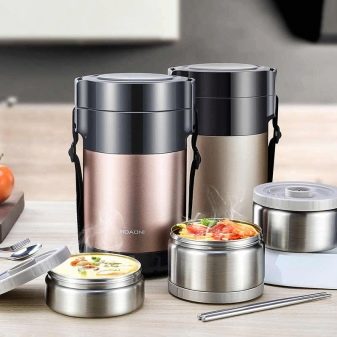
Device
The main structural elements that make up a thermos are as follows.
- Frame. Made from stainless steel or plastic. Protects the flask from damage. The metal case is more reliable than the plastic case, has increased strength. A layer of thermal insulation is laid between the body and the flask.
- Double wall flask - the main element in the device. A vacuum is created between the walls of the flask, which practically excludes the exchange of the stored product with the environment, which is the determining factor for maintaining the temperature of the products.
- Cork and cap. They close the neck of the product, have low heat-conducting properties. Inside the cover there is an air gap or a porous heat-insulating material. Caps are ordinary screw, with a valve, with a pump. It is important how the cover is arranged, since the main heat losses occur through it.Lids without holes provide the best safety, so often simple inexpensive thermoses keep food much longer than expensive models with a pump.
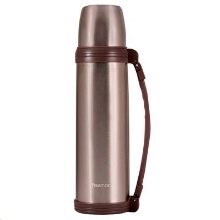
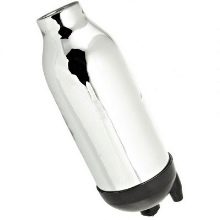
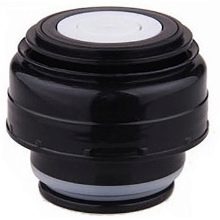
If you look at how the thermos is made in section, you can see the following structure:
- outer wall of the body;
- thermal insulation layer;
- the outer wall of the flask;
- vacuum area;
- the inner wall of the flask;
- product area.
The neck is closed from above with a lid, at the bottom of the product there is a bottom.
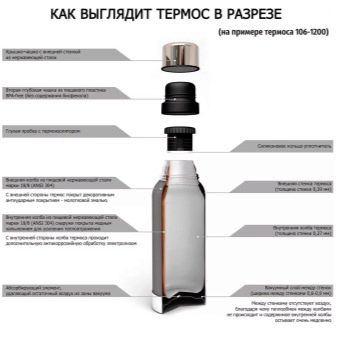
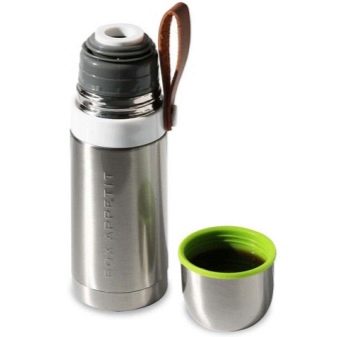
materials
The materials from which the thermos is made can also be different.
- Glass. The inner glass flask ensures long-term storage, is easy to clean and does not absorb odors. The only drawback of glass is its brittleness, which requires the most careful handling.
- Metal. Stainless steel flasks are the strongest, but heavier than glass flasks. As a rule, the outer case is also made of stainless steel. Suitable for truckers and tourists, where, with constant shaking, increased strength is most welcome.
- plastic flasks the cheapest, but their consumer properties are questionable. The smell of plastics is transferred to products and absorbs food odors. It is better to store hot water in them only for technical use, but not for food (for example, warm a frozen lock in a car, wash your hands in cold weather, something else like that).
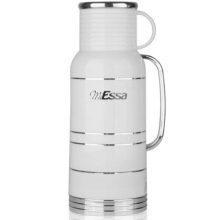
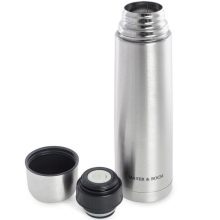

Principle of operation
In nature, there are 3 ways of heat transfer: convection, conduction and thermal radiation. All thermal containers operate on the basis of this law of physics. The purpose of the thermos is to reduce the processes of heat exchange between the contents of the thermos and the environment to a minimum. During convection, thermal energy is transferred by moving flows of liquid or gas. The product hermetically sealed in a thermos has contact only with the inner wall of the flask, so convection does not occur.
With heat conduction, atoms of substances with different temperatures move randomly at different speeds, collide with each other, upon impact, fast hot atoms give off energy to slow cold ones and cool down, the movement slows down. In a thermos, the double walls of the flask, between which a vacuum is created, prevent the occurrence of thermal conductivity, since they do not have a heat conductor from the inner wall to the outer.
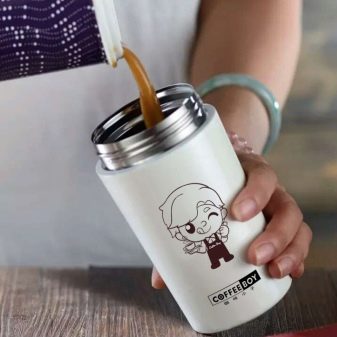

During thermal radiation, the electromagnetic field of hot atoms oscillates, thermal energy is transmitted in the form of infrared radiation. The mirror surface of the thermos walls reflects the radiation back to the product. Of course, ideal thermoses do not exist.
It will not be possible to create an absolute vacuum and completely eliminate heat transfer. But for domestic purposes, the so-called technical vacuum is quite sufficient.
How the thermos is arranged, see the following video.






















